
Bathroom floods are an unexpected and stressful event that can wreak havoc on your home. In Tampa, frequent heavy rains and aging plumbing systems increase the likelihood of such incidents.
However, with the right techniques and a calm approach, you can manage the situation effectively. Here, we unveil the specific techniques used by restoration experts to tackle bathroom floods. Read on to learn how to minimize damage and restore your Tampa bathroom to its sparkling best.
Top Tips for Tackling Tampa Bathroom Floods
1. Identify the Source of the Flood
When dealing with a bathroom flood, the first and most crucial step is identifying the source of the water. Knowing whether the flood is due to a broken pipe, a malfunctioning toilet, or an overflowing sink will help you address the issue more effectively.
· Broken Pipes: Often, a broken pipe will show visible signs such as water stains on walls or ceilings, unusual sounds of water running, or a noticeable drop in water pressure. Look for these indicators to pinpoint the problem.
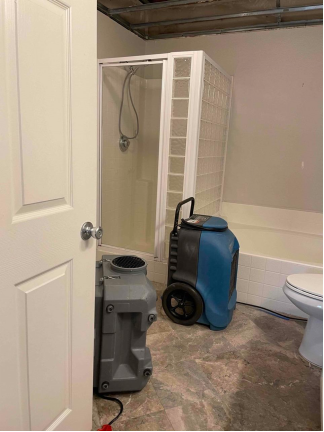
· Toilet Overflows: If your toilet is the source, it may continuously run or overflow due to a blockage or a faulty flush mechanism. Check for visible blockages and ensure the float and flapper are working correctly.
· Sink Overflows: For sinks, ensure the drain isn’t clogged. Remove any visible obstructions from the drain. Sometimes, a sink overflow can result from a stuck drain stopper, so check if the stopper is working properly.
2. Turn Off the Water Supply
Once you have identified the source, the next step is to stop the water from continuing to flood your bathroom. Locate and turn off the main water valve to prevent additional water from entering the space. The main water shutoff valve is typically found near the bathroom or under the sink. Turning this off quickly can significantly reduce the extent of the damage.
3. Remove Standing Water
After stopping the water flow, it’s essential to remove any standing water as quickly as possible. Use towels, mops, and buckets to soak up and remove the water. This step is crucial to prevent water from seeping into the floors and walls, which can lead to more severe damage and mold growth.
For larger amounts of water, a wet/dry vacuum can be very effective. Ensure you empty the vacuum frequently and continue until all standing water is removed.
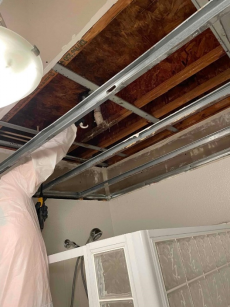
4. Dry the Area Completely
Drying the area thoroughly is key to preventing long-term damage and mold growth. Use fans, dehumidifiers, and open windows to increase air circulation and speed up the drying process. If the flood was severe, you might need to rent or purchase industrial-grade equipment to ensure the area dries completely.
Pay special attention to hidden areas like under cabinets and behind baseboards where moisture can linger and lead to mold growth.
5. Clean and Disinfect the Area
Floodwater can carry bacteria and contaminants, making thorough cleaning and disinfecting essential. Use a bleach solution (one cup of bleach to five gallons of water) to disinfect all surfaces, including floors, walls, and any affected fixtures. This will help kill any bacteria and prevent mold from developing.
6. Inspect for Damage
Once the area is dry and clean, inspect your bathroom for any signs of damage. Look for:
· Warped Floors: Water can cause wooden floors to warp, swell, or even buckle. Check for any signs of these issues.
· Damaged Walls: Look for water stains, peeling paint, or damage to drywall. These signs indicate that water has seeped into the walls.
· Mold Growth: Mold can start growing within 24-48 hours after a flood. Look for any signs of mold, such as black or green spots on walls, floors, or around the base of the toilet and sink.
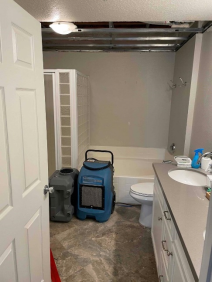
7. Call Professional Water Damage Removal Services
If the damage is extensive or beyond what you can handle, it’s time to call in professionals. Water damage removal in Tampa requires specialized knowledge and equipment. Professionals can handle severe flood damage, ensuring that your bathroom is restored to its original condition efficiently.
8. Opt for Same Day Water Damage Restoration
When dealing with water damage, time is of the essence. Same day water damage restoration in Tampa can prevent further deterioration and save you from more extensive repairs. Quick action can also help salvage personal belongings and reduce the overall cost of restoration.
Implement Preventive Measures
To avoid future bathroom floods, implement the following preventive measures:
· Regular Maintenance: Regularly inspect and maintain your plumbing system to catch and fix any issues before they lead to a flood. This includes checking pipes, toilets, and sinks for signs of wear and tear.
· Install Water Alarms: Water alarms can alert you to leaks or floods before they become major problems. These devices are inexpensive and easy to install.
· Seal Gaps: Ensure that all gaps around bathtubs, sinks, and toilets are sealed properly to prevent water from seeping into the floors and walls. Use caulk or waterproof sealant to secure these areas.
Flood Restoration in Tampa
Flood restoration in Tampa involves several key steps:
1. Water Extraction: Removing all standing water is the first and most critical step. This might involve pumps and industrial vacuums for larger floods.
2. Drying: Using high-powered fans and dehumidifiers to dry the area thoroughly.
3. Cleaning: Disinfecting all affected areas to kill bacteria and prevent mold growth.
4. Repairs: Addressing any structural damage, including replacing damaged drywall, flooring, and plumbing fixtures.
Trust Flood Pros USA for the Job!
Facing a bathroom flood can be overwhelming, but you don't have to handle it alone. At Flood Pros USA, we specialize in flood damage repairs in Tampa. Our team of experts also offer same day water damage restoration and mold repair in Tampa. Contact us now for professional and reliable service to get your bathroom back to its sparkling best.
Subscribe to Flood Pros USA's Blog

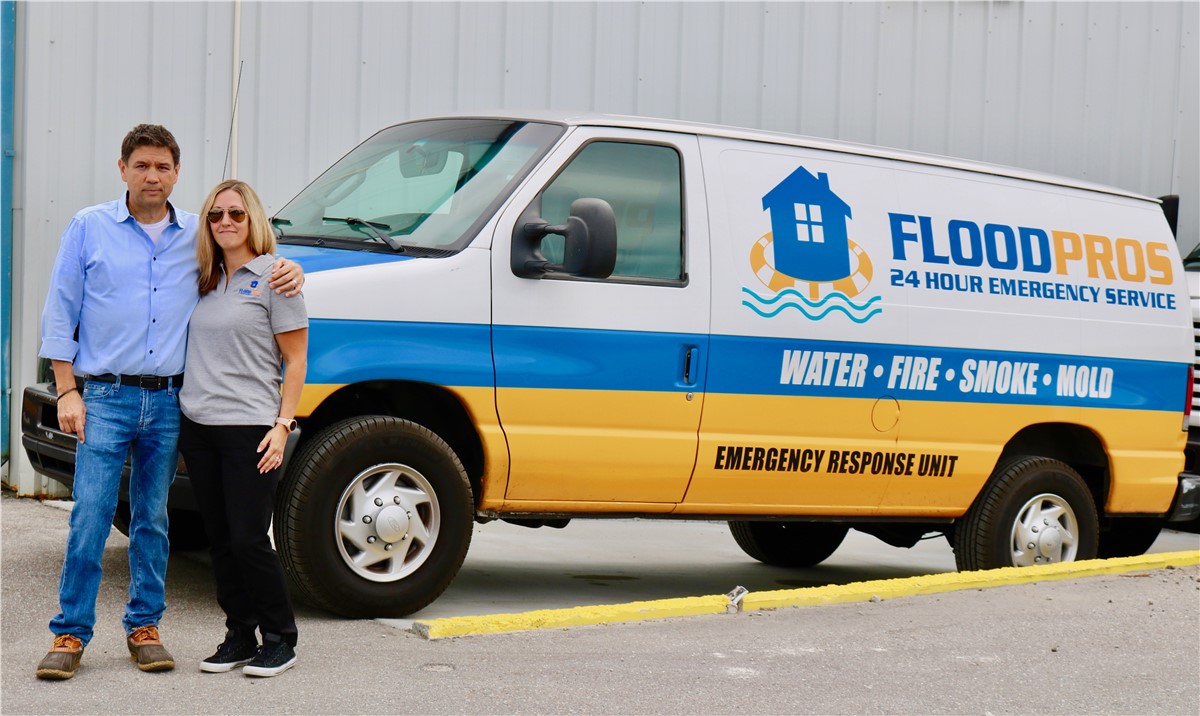
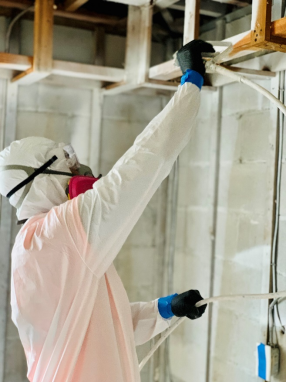

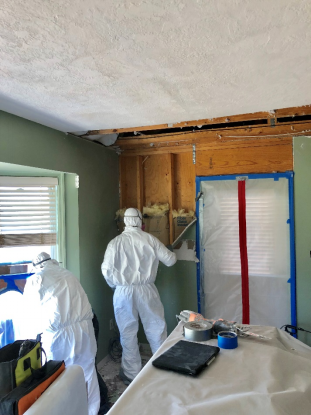
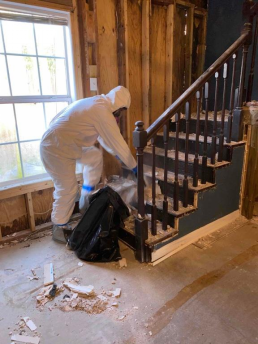

Comments